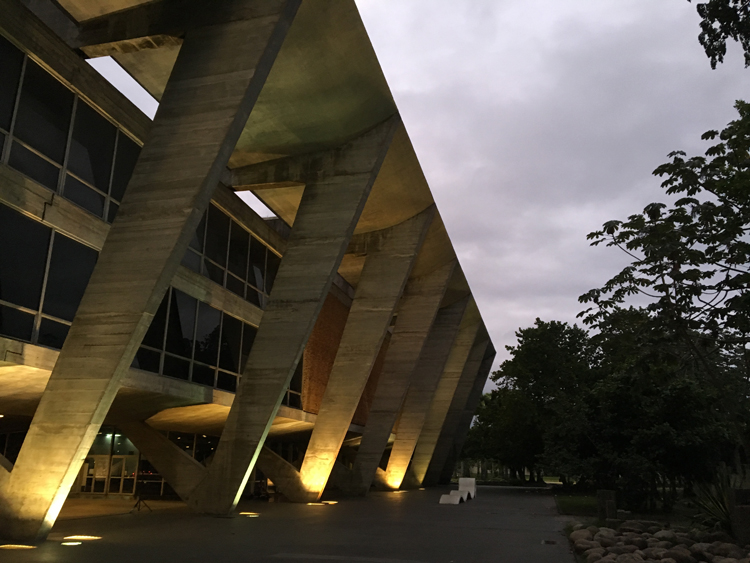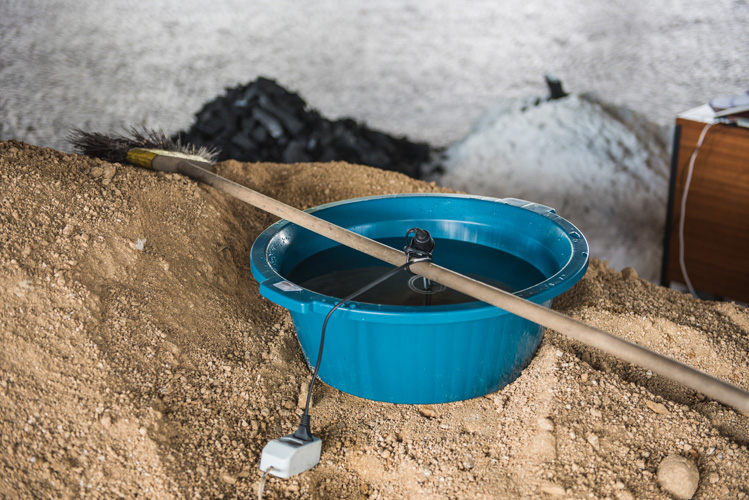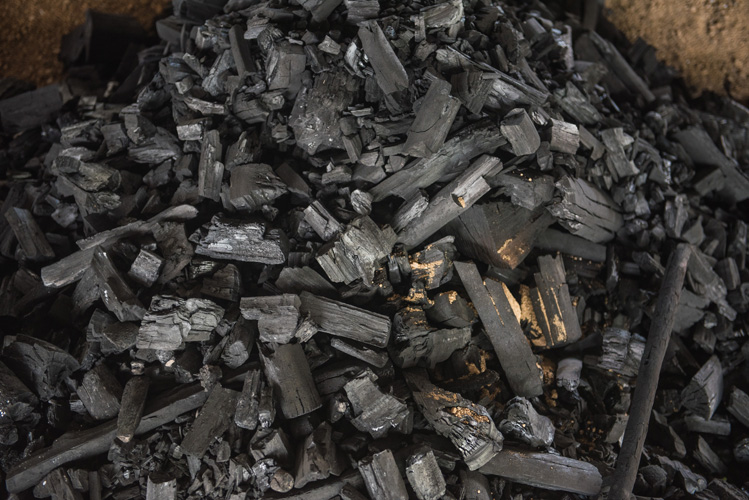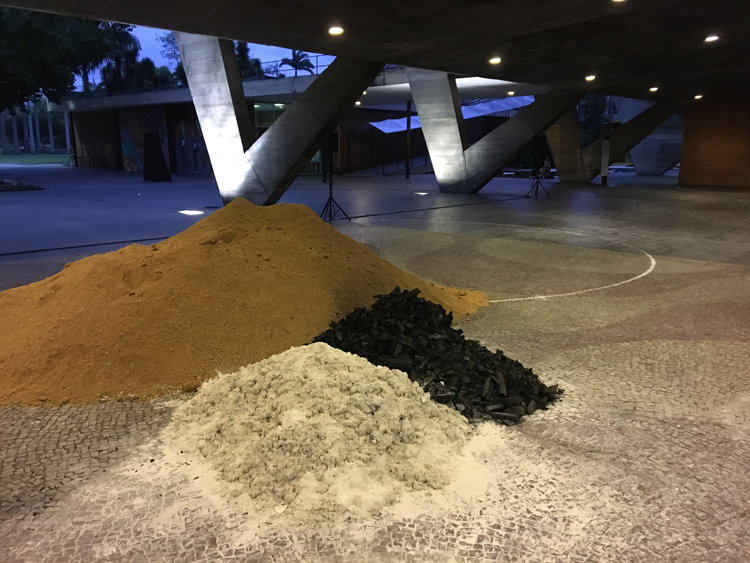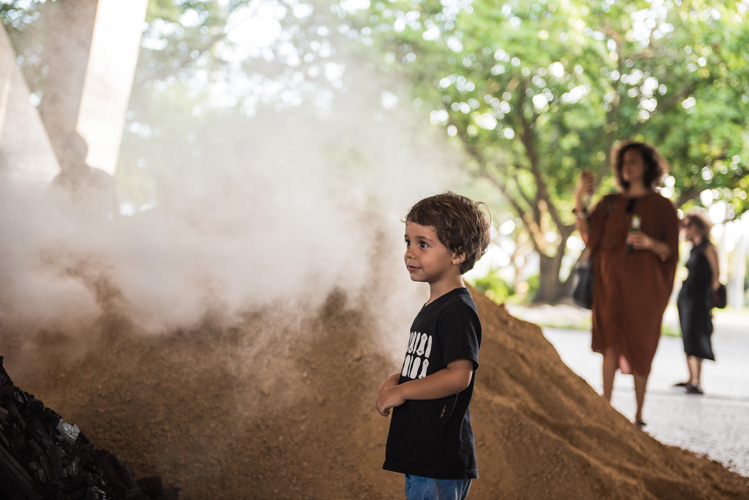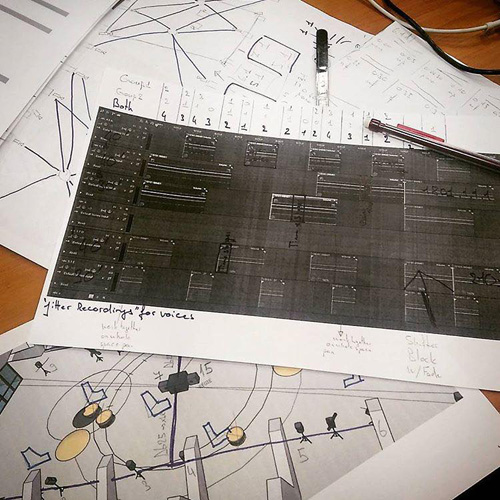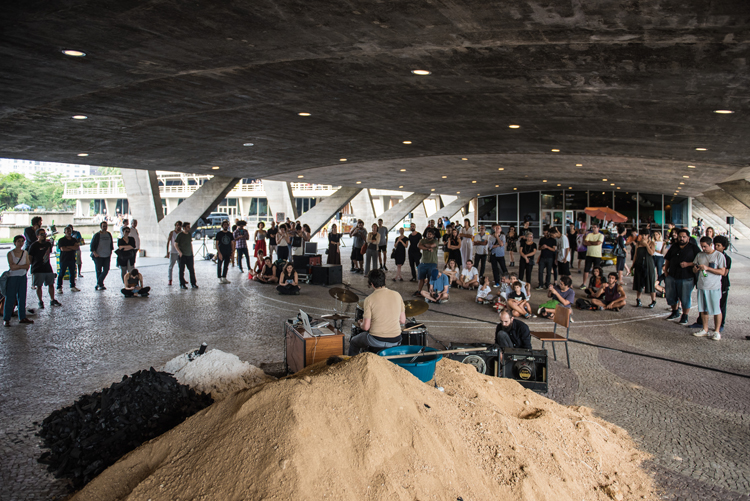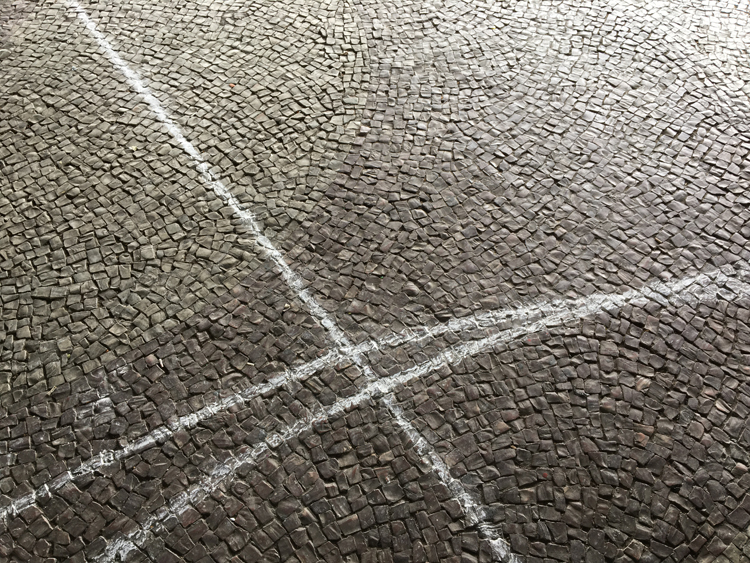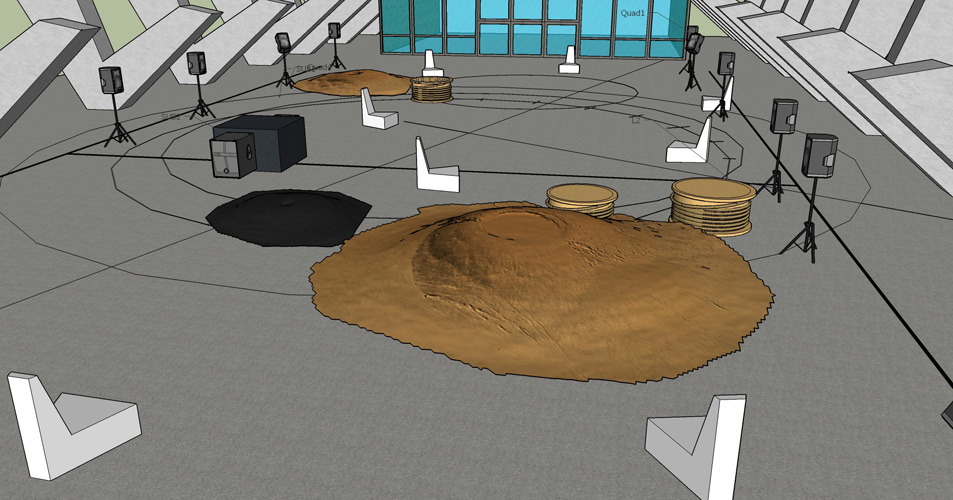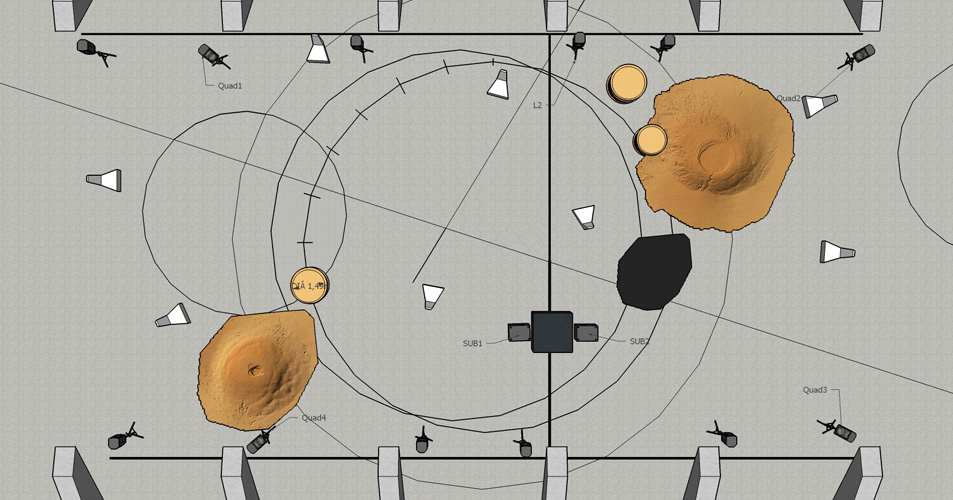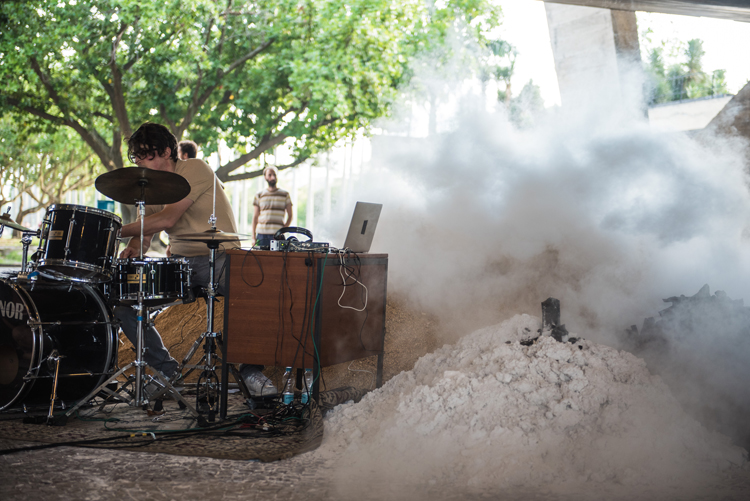TO THE BONE
Video about the installation here
Sound example
In December 2017, Nicolas was invited to create a new sound and visual installation as part of the 7th edition of the Brazilian festival NOVAS FREQUÊNCIAS in Rio de Janeiro, dedicated to sound art and experimental music. For this project, Nicolas worked in partnership with the Brazilian artist Pontogor and developed with him an installation around the idea of "roots" at the entrance of the Museum of Modern Art in Rio de Janeiro (Museu de Arte Moderna , MAM).
"To the Bone" is based on a multichannel broadcast of five different sound loops, divided into two specific groups of different lengths. The first group has a total duration of 1:00, the other, a duration of 1:10. As the two groups are played simultaneously in parallel, they shift over time and come back in sync after 7 hours. The idea was that at each iteration, small variations occur and progressively these mutations become real changes and evolutions. The musical material consisted of a mixture of abstract sound material (synthseized and processed) as well as voices and concrete sounds related to the Brazilian cultural heritage, including speeches, films, interviews and works by other artists with more or less political ties to Brazil, the federal state and the colonial past of the country.
Thanks to a precise spatialization and the positioning of the 12 loudspeakers in the exhibition space (using the specific acoustic chracterisics of the space, the convex roof and the special transitional space between inside and outside), the duo's objective was to make the visitors physically feel the architecture of the space through sound. To allow visitors to feel the tension point between the outside and the inside, allowing them to hear inside (the somewhat sanctified exhibition space) and outside (public space) at the same time. Ideally creating an evolving space, closely related with the exhibition place and even interfering with it. The soundscape was reinforced by a visual insallation, using materials such as earth, sisal, charcoal, lime, chalk drawings and smoke.
